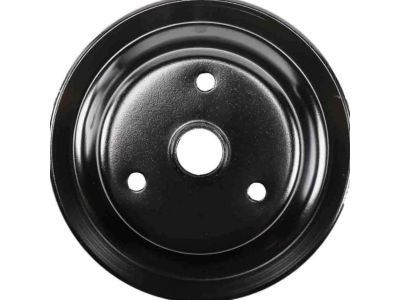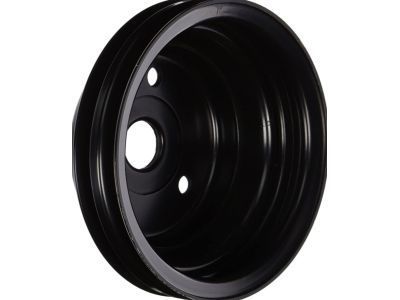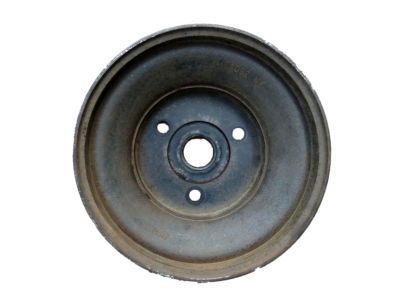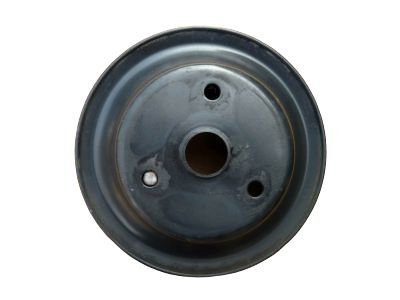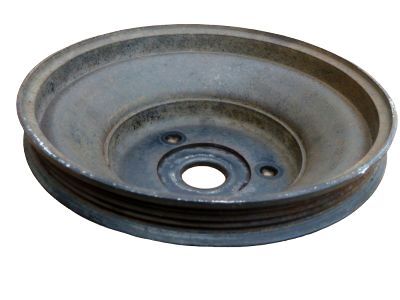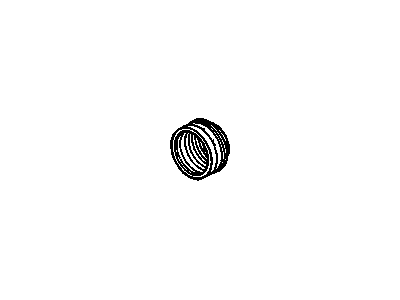
My Garage
My Account
Cart
Genuine Chevrolet Astro Crankshaft Pulley
Crankshaft Pulley Engine Harmonic Balancer- Select Vehicle by Model
- Select Vehicle by VIN
Select Vehicle by Model
orMake
Model
Year
Select Vehicle by VIN
For the most accurate results, select vehicle by your VIN (Vehicle Identification Number).
9 Crankshaft Pulleys found
Chevrolet Astro Pulley, Crankshaft
Part Number: 10085754$34.65 MSRP: $57.36You Save: $22.71 (40%)Ships in 1-2 Business DaysChevrolet Astro Pulley Assembly, Crankshaft
Part Number: 14023147$27.85 MSRP: $59.60You Save: $31.75 (54%)Ships in 1-2 Business Days
Chevrolet Astro Crankshaft Pulley
Chevrolet Astro vehicles rely on the Performance Crankshaft Pulley to transmit power to several components such as the power steering pump, A/C compressor, and the alternator among others. The Performance Crankshaft Pulley pulls torque from the crankshaft of the engine making it efficient and performant. It is possible that different types of Performance Crankshaft Pulley were used throughout the different models of Chevrolet Astro, Some are intended to provide greater power while reducing the vibrations of the engine. Apart from enhanced efficiency this dual purpose plays a large role in the overall functionality of the Performance Crankshaft Pulley because this is one part that sets the Chevrolet Astro family apart from the rest.
Each OEM Chevrolet Astro Crankshaft Pulley we offer is competitively priced and comes with the assurance of the manufacturer's warranty for the part. Furthermore, we guarantee the speedy delivery of your orders right to your doorstep. Our hassle-free return policy is also in place for your peace of mind.
Chevrolet Astro Crankshaft Pulley Parts Questions & Experts Answers
- Q: How to properly remove and reinstall the crankshaft pulley in four cylinder engine on Chevrolet Astro?A:First, disconnect the cable from the negative terminal of the battery and if the car has the feature applicable to the audio system then turn off the anti-theft alarm system. Subsequently, take out the drivebelts and make sure you label them especially if you are doing a replacement so you can put them back in their respective places. Lift the vehicle and support using jackstands. As for c ars that have the manual transmission, set the parking brakes and set the gear shift of the car to neutral; this will prevent the engine from turning over while you remove the crankshaft pulley bolts. In automobiles with automatic transmission, some modifications may be required such as; the removal of the starter motor and immobilization of the starter ring gear using a large screwdriver while the other person loosens the bolts of the pulley. To ease the crankshaft hub retaining bolt, place another bolt on one of the pulley bolt holes, secure a breaker bar, extension and socket on the crankshaft hub retaining bolt and keep the hub from rotating by inserting a large screwdriver alongside the bolt and socket before turning the bolt anticlockwise to remove it. Take out the crankshaft hub if you can, using a puller if that's needed. Coat a thin layer of moly-base grease to the sealing area of the pulley hub; slide the crankshaft pulley hub until it reaches the bottom most position stop against the crankshaft timing gear sprocket with the slot on the pulley hub facing the Woodruff key way. The hub retaining bolt can be used to force the hub into the right position as required when fitting the new hub. Screw the hub-to-crankshaft bolt to the recommended torque, fit the crankshaft pulley to the hub, engaging the threads of the bolt with Loctite, then re-engage the drivebelts.
Related Chevrolet Astro Parts
Browse by Year
2005 Crankshaft Pulley 2004 Crankshaft Pulley 2003 Crankshaft Pulley 2002 Crankshaft Pulley 2001 Crankshaft Pulley 2000 Crankshaft Pulley 1999 Crankshaft Pulley 1998 Crankshaft Pulley 1997 Crankshaft Pulley 1996 Crankshaft Pulley 1995 Crankshaft Pulley 1994 Crankshaft Pulley 1993 Crankshaft Pulley 1992 Crankshaft Pulley 1991 Crankshaft Pulley 1990 Crankshaft Pulley 1989 Crankshaft Pulley 1988 Crankshaft Pulley 1987 Crankshaft Pulley 1986 Crankshaft Pulley 1985 Crankshaft Pulley
